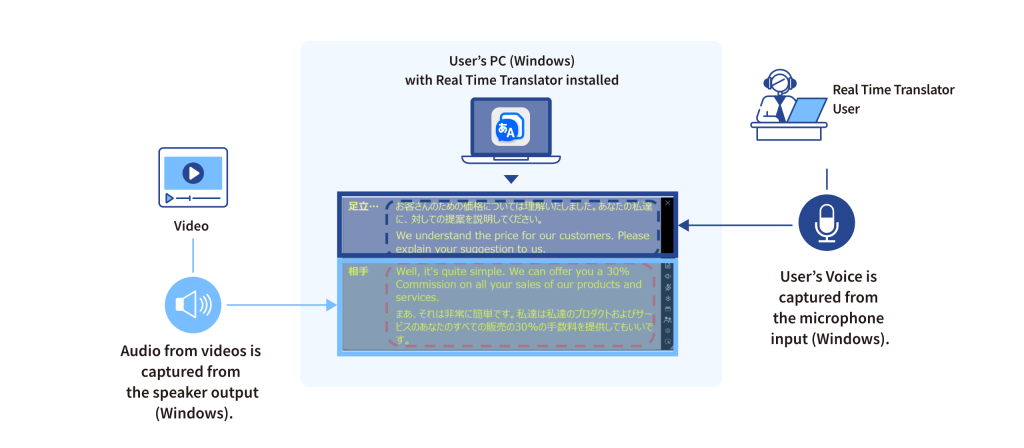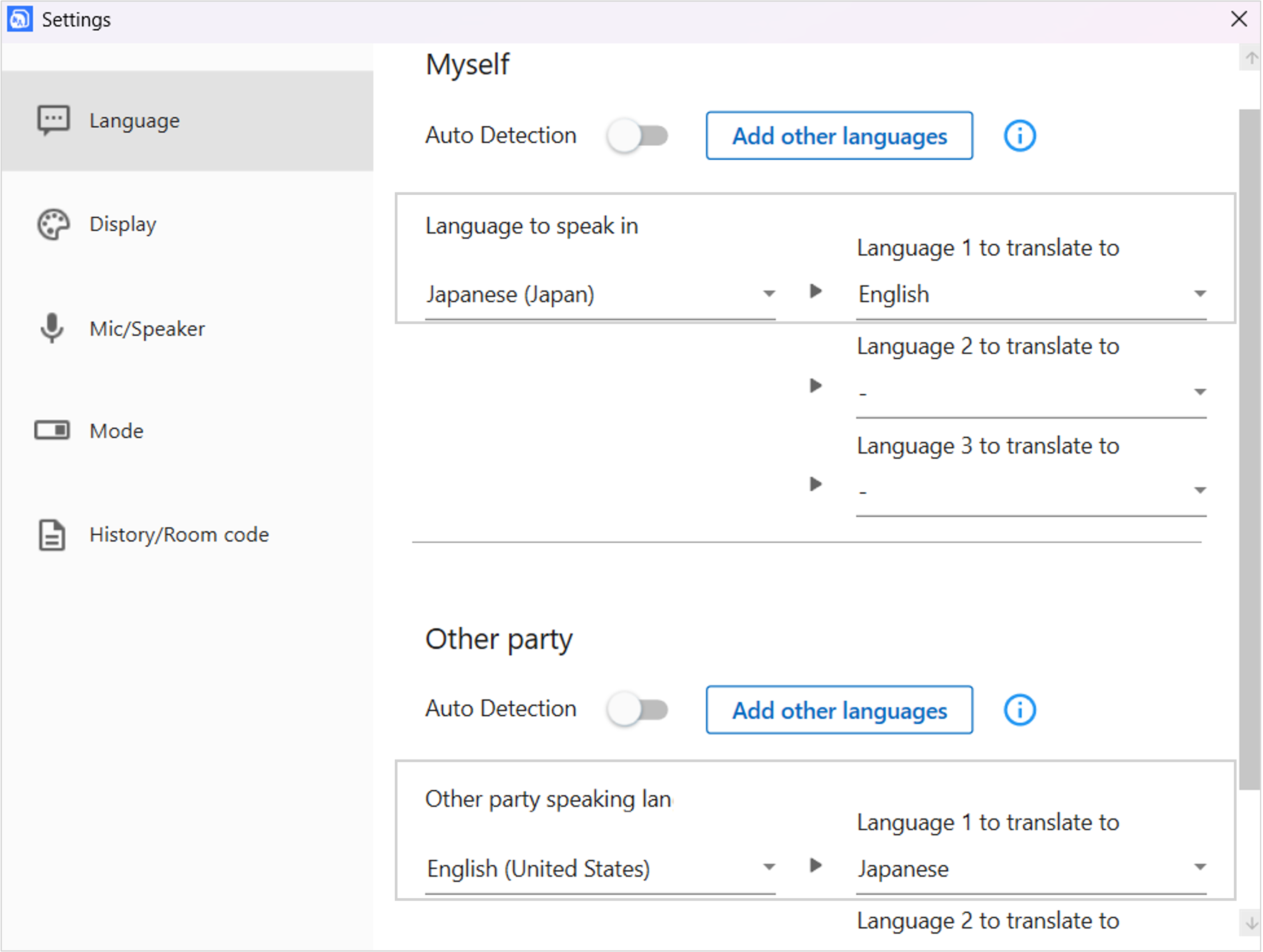Real-Time Translation for Videos and Webinars Real Time Translator Use Cases
Real-Time Translation for Videos and Webinars
To watch foreign-language videos and webinars with real-time translation, we highly recommend using the Real Time Translator tool. In this article, we introduce the setup required for viewing videos and webinars using Real Time Translator for seamless real-time translation.
Table of Contents
Benefits of Real-Time Video Translation Tools
Real-time translation tools eliminate language barriers, making it easier to watch multilingual videos and webinars. Companies with international clients or a multinational workforce can particularly benefit from:
- Smooth understanding of specialized presentations conducted in English or other languages.
- Easier understanding of Japanese webinars for international staff and partners.
- Access to specialized knowledge without language constraints.
- Building strong relationships with international clients and partners.
- Reducing information disparities caused by language differences.
How Real-Time Webinar Translation Works

Real Time Translator can translate audio obtained from both microphone input and speaker output of windows.
Your own voice is captured via microphone input, while audio from videos or webinars is captured via speaker output.
Configuring Microphone & Speaker Inputs
Open the “Microphone & Speaker” tab in settings and configure as follows to translate foreign-language videos and webinars into Japanese for viewing.

Be sure to configure the language settings as well.
Open the “Language” tab and set the spoken language of the video/webinar and the desired translated language. Since this use case assumes passive viewing only, no need to change “Your Language Settings.”
Example (if the foreign language is English):

What is Real-Time Video Translation?
Real-time video translation is a cutting-edge technology enabling instant translation of spoken content within videos into subtitles or audio streams. As businesses become increasingly globalized, effective multilingual communication, particularly in web meetings, online events, and international conferences, has become crucial.
Real-time video translation integrates three advanced technologies:
1. Speech Recognition (ASR)
Real-time video translation begins with speech recognition technology converting spoken audio into text. Leveraging deep learning, modern speech recognition achieves high accuracy, even in noisy environments such as offices or cafes, making it ideal for multilingual web meetings.
- Accurate speech recognition in noisy environments
- Effective speaker identification in multi-person scenarios
- Minimal translation delays due to rapid real-time processing
2. AI Machine Translation
AI-driven machine translation converts the recognized text into another language in real-time. Today’s leading real-time translation tools employ Neural Machine Translation (NMT), which ensures highly accurate and contextually appropriate translations.
- Contextually relevant translations beyond literal word-to-word methods
- Specialized terminology translation for sectors like medical, legal, and IT
- Continuous AI learning enhancing translation accuracy over time
3. Text-to-Speech and Subtitling
Translated text is transformed either into audio or displayed as subtitles, ensuring seamless multilingual communication during web meetings or video conferences.
- Natural pronunciation and intonation in audio translations
- Broad multilingual capability, including regional and less-common languages
- Customizable voice options to align with corporate branding
Benefits of Implementing Real-Time Translation Tools
Adopting real-time translation tools offers businesses substantial advantages, particularly in facilitating multilingual web meetings and improving overall communication efficiency.
Improved Multilingual Communication
Real-time translation tools enable fluent interactions among global teams and international clients, significantly improving multilingual web meetings’ efficiency.
Streamlined Web Meetings
Avoiding sequential interpretation delays ensures smoother, more efficient web meetings and international collaborations.
Cost Efficiency
Reducing reliance on professional interpreters, real-time translation tools offer significant cost savings, enhancing economic efficiency in global operations.
Effective Use of Meeting Records
Real-time translation tools often allow users to save translated subtitles or audio, simplifying the creation of meeting documentation and post-meeting knowledge sharing.
How to Choose the Best Real-Time Translation Tool
When selecting a real-time translation tool, prioritize the following considerations:
Supported Languages:
Ensure compatibility with primary business languages and industry-specific terminology.
Translation Accuracy:
Opt for advanced AI translation solutions employing the latest deep learning techniques.
Integration Ease:
Select tools compatible with popular web conferencing platforms such as Zoom, Microsoft Teams, or Google Meet.
Robust Security:
Confirm that tools provide secure, encrypted communication, clear data retention policies, and strict access control.
Conclusion
Real-time video translation tools are essential for enhancing global communication, streamlining multilingual web meetings, and overcoming linguistic barriers. Investing in the right tool is now a necessity, not an option, for businesses operating on the international stage.
Would you like to experience the tools in action?
Other Use Cases
- Smooth Multilingual Meetings for 3+ Languages – With Automatic Language Detection
- Real-Time Voice Translation with Automatic Language Detection for Face-to-Face meetings
- AI Meeting Assistant for Automatic Meeting Minutes Summarization
- Real-Time Speech-to-Text Software for Hearing-Impaired Individuals
- Smart Glasses Real-Time Translation | Seamless Multilingual Communication
- Simultaneous Interpretation in Multilingual Web Meetings